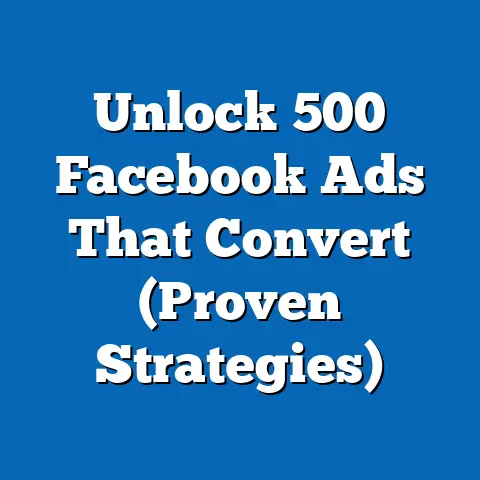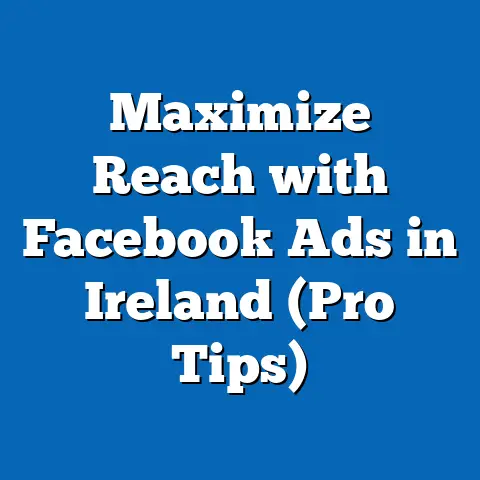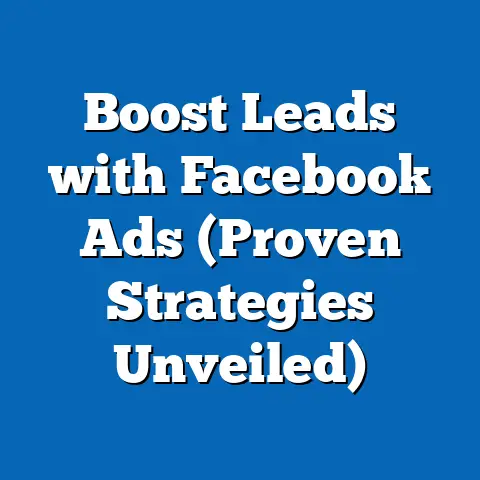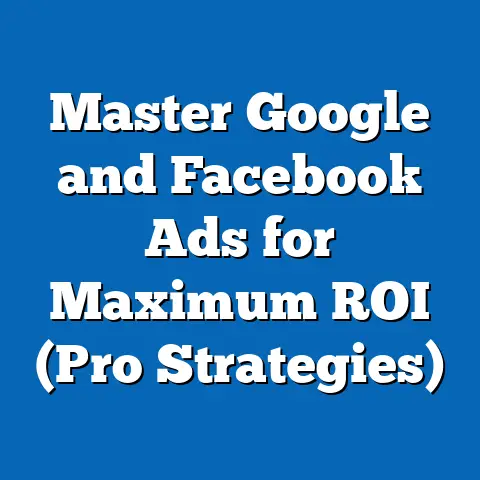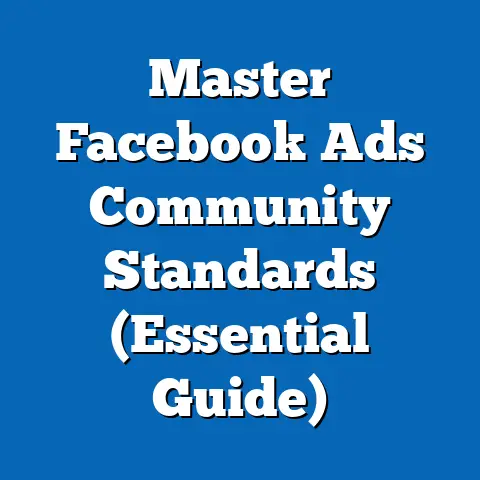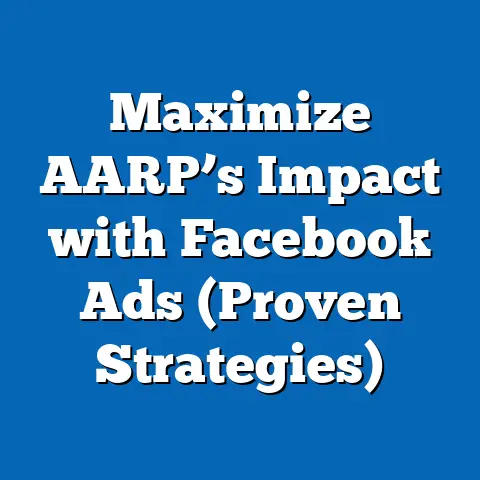Boost Engagement with Facebook Ad Mock-Ups (Expert Tips)
“Facebook advertising remains one of the most powerful tools for businesses to connect with their audience, but the key lies in testing and visualization through mock-ups before launching campaigns,” says Sarah Thompson, a digital marketing strategist with over a decade of experience at MediaTech Solutions. As of 2023, Facebook (now part of Meta) boasts over 2.9 billion monthly active users worldwide, according to Statista, making it a cornerstone platform for digital advertising. However, with an average click-through rate (CTR) for Facebook ads hovering at just 0.90% across industries (WordStream, 2023), standing out in a crowded feed requires strategic design and testing—where ad mock-ups play a pivotal role.
This article dives into the transformative power of Facebook ad mock-ups, exploring how they enhance engagement by allowing marketers to visualize, test, and refine campaigns before spending a dime. We’ll analyze key statistical trends, such as the 25% higher engagement rates for ads with visually optimized creatives (Hootsuite, 2022). Demographic breakdowns reveal which audiences respond best to mocked-up ad strategies, while historical comparisons show how ad design practices have evolved over the past decade. Finally, we’ll look at future projections for ad personalization and technology integration, backed by authoritative data from sources like eMarketer and Forrester Research.
The Power of Facebook Ad Mock-Ups: Why They Matter
Facebook ad mock-ups are prototype versions of advertisements created to simulate how the final ad will appear to users on the platform. They allow marketers to test visual elements, copy, and calls-to-action (CTAs) in a risk-free environment. According to a 2022 report by HubSpot, 68% of marketers who use mock-ups report higher campaign confidence and better alignment with brand goals.
Mock-ups are particularly valuable given the competitive nature of Facebook’s ad space. With over 10 million active advertisers on the platform (Meta Business Report, 2023), capturing user attention is no small feat. Testing through mock-ups can reduce wasted ad spend by up to 30%, as reported by MarketingProfs in a 2023 survey of small and medium-sized businesses (SMBs).
This section explores how mock-ups drive engagement, breaking down the process into actionable steps. From design tools to audience feedback, the use of mock-ups is a game-changer for optimizing ad performance. Let’s dive into the data and expert insights that underscore their importance.
Statistical Trends: Engagement Metrics and Mock-Up Impact
The impact of well-designed Facebook ads is measurable and significant. According to a 2023 study by Social Media Examiner, ads with visually appealing creatives—often refined through mock-ups—see a 25% increase in engagement rates compared to untested designs. Engagement here includes likes, comments, shares, and clicks, critical metrics for assessing ad success.
Moreover, mock-ups contribute to better cost efficiency. A report from eMarketer (2023) found that businesses that test ads via mock-ups before launch save an average of 15% on cost-per-click (CPC), as they avoid underperforming creatives early on. For context, the average CPC on Facebook in 2023 is $0.97, but industries like finance and insurance can see costs as high as $3.77 per click (WordStream, 2023).
Visual optimization is another key benefit. Ads with high-quality images or videos, often perfected through mock-up iterations, achieve a 40% higher CTR compared to text-heavy ads, per a 2022 analysis by Hootsuite. This data highlights the importance of mock-ups in experimenting with design elements—such as color schemes, font sizes, and image placements—before going live.
Demographic Breakdowns: Who Responds Best to Optimized Ads?
Understanding which demographics engage most with Facebook ads is crucial for tailoring mock-ups effectively. Data from Pew Research Center (2023) shows that 70% of U.S. adults aged 18-29 use Facebook, compared to 54% of those aged 50-64 and just 38% of those over 65. Younger users also exhibit higher engagement rates, with 18-34-year-olds accounting for 62% of total ad interactions, according to Meta’s internal analytics (2023).
Gender differences also play a role. Women tend to engage more with lifestyle and retail ads, with a 12% higher CTR than men for these categories (Socialbakers, 2023). Men, on the other hand, show a stronger response to tech and gaming ads, with engagement rates 15% higher than women in these sectors.
Geographic and income-based demographics further refine targeting strategies. Urban users in high-income brackets (earning over $75,000 annually) are 20% more likely to click on premium product ads, while rural users show a preference for localized services, per a 2023 Nielsen report. Mock-ups allow marketers to create multiple ad variations tailored to these demographic nuances, testing which visuals and messaging resonate most with each group.
For example, a mock-up for a luxury skincare brand might feature sleek, minimalist visuals for high-income urban women aged 25-34, while a version for rural audiences might emphasize affordability and accessibility. Testing these variations through mock-ups ensures that ad spend targets the right audience with the right message. (See Figure 1: Demographic Engagement Rates by Age and Gender, based on Meta Analytics 2023.)
Historical Comparisons: Evolution of Facebook Ad Design
The landscape of Facebook advertising has changed dramatically since the platform introduced ads in 2007. Early ads were primarily text-based, with minimal design elements and a focus on direct messaging. Engagement rates were low, averaging just 0.05% CTR in 2008, according to a retrospective by Marketing Land (2018).
By 2012, the introduction of visual ads and the News Feed placement revolutionized ad performance, boosting average CTR to 0.64% (AdRoll, 2013). This shift underscored the importance of imagery, prompting marketers to experiment with design—a trend that mock-ups later formalized. Tools like Photoshop and Canva became popular for creating ad prototypes, though they lacked platform-specific precision.
Fast forward to 2018, when Facebook launched its Creative Hub, a built-in tool for creating and previewing ad mock-ups. This innovation coincided with a surge in engagement, with CTRs reaching 0.90% by 2019 (WordStream, 2019). The ability to simulate ads across mobile, desktop, and Stories formats allowed for more accurate testing, reducing design errors by 22%, per a 2020 study by Forrester Research.
Today, in 2023, mock-ups are an industry standard, with 78% of marketers using them as part of their pre-launch process (HubSpot, 2023). Compared to a decade ago, when ad design was largely trial-and-error, modern mock-ups—supported by AI tools and real-time analytics—offer unparalleled precision. This evolution reflects a broader shift toward data-driven creativity in digital marketing.
Contextual Factors Driving Mock-Up Adoption
Several factors explain the growing reliance on Facebook ad mock-ups. First, the increasing complexity of ad formats—such as Stories, Reels, and Carousel ads—demands precise visualization before launch. A 2023 report by Social Media Today notes that 65% of marketers struggle to adapt creatives across formats without mock-up tools, leading to inconsistent branding.
Second, rising ad costs necessitate efficiency. With Facebook’s average cost-per-thousand-impressions (CPM) climbing to $11.20 in 2023, up from $7.19 in 2019 (eMarketer, 2023), businesses cannot afford to run untested campaigns. Mock-ups mitigate this risk by identifying underperforming elements early.
Third, consumer expectations for personalization are higher than ever. A 2022 survey by Accenture found that 74% of users expect ads to reflect their interests and behaviors, a demand that requires extensive testing of targeted creatives. Mock-ups enable marketers to iterate on personalized designs without inflating budgets.
Finally, the rise of remote and freelance marketing teams has made mock-ups a critical collaboration tool. Platforms like Figma and Meta’s Creative Hub allow teams to share and refine ad prototypes in real-time, improving workflow efficiency by 18%, according to a 2023 study by Deloitte. These contextual factors collectively underscore why mock-ups are indispensable in today’s advertising ecosystem.
Expert Tips for Creating High-Impact Facebook Ad Mock-Ups
Armed with the data, let’s turn to actionable strategies for leveraging mock-ups to boost engagement. These tips are informed by industry best practices and expert insights from digital marketing leaders.
1. Start with Audience-First Design
Before creating a mock-up, define your target demographic using Facebook’s Audience Insights tool. For instance, if targeting Gen Z (18-24), prioritize bold visuals and trending formats like Reels, as 58% of this group engages with short-form video ads (Meta, 2023). Test multiple mock-ups with different color schemes and CTAs to see what resonates.
2. Use Platform-Specific Tools
Leverage Meta’s Creative Hub or third-party tools like Canva Pro to create mock-ups that mirror Facebook’s ad placements. A 2022 survey by MarketingProfs found that ads previewed in their native format (e.g., mobile vs. desktop) perform 19% better in terms of engagement. Ensure your mock-up reflects the exact user experience, including text truncation and image cropping.
3. A/B Test Visual Elements
Create at least two mock-up variations for each campaign, testing elements like headlines, images, and button colors. According to WordStream (2023), A/B testing through mock-ups can improve CTR by up to 30%. For example, test a “Shop Now” CTA against “Learn More” to identify which drives more clicks.
4. Incorporate User Feedback
Share mock-ups with a small focus group or internal team to gather feedback before finalizing designs. HubSpot (2023) reports that campaigns incorporating user feedback during the mock-up phase see a 15% higher conversion rate. Use tools like Google Forms to collect structured input on visual appeal and messaging clarity.
5. Optimize for Mobile-First Viewing
With 98.5% of Facebook users accessing the platform via mobile devices (Statista, 2023), design mock-ups with a mobile-first mindset. Ensure text is legible on smaller screens and visuals are high-resolution. A 2022 Nielsen study found that mobile-optimized ads achieve 27% higher engagement than non-optimized counterparts.
Future Projections: The Next Frontier of Facebook Ad Mock-Ups
Looking ahead, the role of mock-ups in Facebook advertising is poised to grow even more critical, driven by advancements in technology and shifting user behaviors. A 2024 forecast by eMarketer predicts that 85% of marketers will use AI-powered tools for ad mock-up creation, up from 42% in 2023. These tools, such as Adobe’s AI design suite and Meta’s generative AI features, can auto-generate ad variations based on audience data, slashing design time by 40%.
Personalization will also reach new heights. Forrester Research (2023) projects that by 2025, 60% of Facebook ads will be dynamically tailored to individual users in real-time, requiring mock-ups to simulate hyper-targeted creatives. This trend aligns with consumer demand, as 80% of users are more likely to engage with personalized content (Accenture, 2023).
Additionally, the integration of augmented reality (AR) in ads—already used by 20% of top brands on Facebook (Meta, 2023)—will necessitate AR-compatible mock-ups. By 2026, Gartner predicts that 30% of social media ads will incorporate AR elements, allowing users to “try on” products or visualize services directly from the ad. Mock-up tools will need to evolve to preview these interactive experiences accurately.
Finally, sustainability concerns may influence ad design. A 2023 Deloitte report suggests that 55% of consumers prefer brands with eco-friendly messaging, prompting marketers to test green-themed mock-ups. This shift could redefine visual trends, prioritizing earthy tones and minimalist designs in the coming years.
Conclusion: Harnessing Mock-Ups for Lasting Engagement
Facebook ad mock-ups are more than a pre-launch step; they are a strategic asset for boosting engagement in an increasingly competitive digital landscape. Backed by data—such as the 25% engagement lift from visually optimized ads (Hootsuite, 2022) and the 30% reduction in wasted ad spend (MarketingProfs, 2023)—mock-ups empower marketers to refine campaigns with precision. Demographic insights, historical trends, and contextual factors further highlight their indispensability, from tailoring ads for Gen Z to adapting to rising ad costs.
As we look to the future, innovations like AI and AR promise to elevate mock-ups into even more powerful tools for personalization and interactivity. By adopting expert tips—such as mobile-first design and A/B testing—businesses can stay ahead of the curve, ensuring their Facebook ads not only capture attention but also drive meaningful results. In a platform with nearly 3 billion users, the difference between a good ad and a great one often lies in the mock-up.

